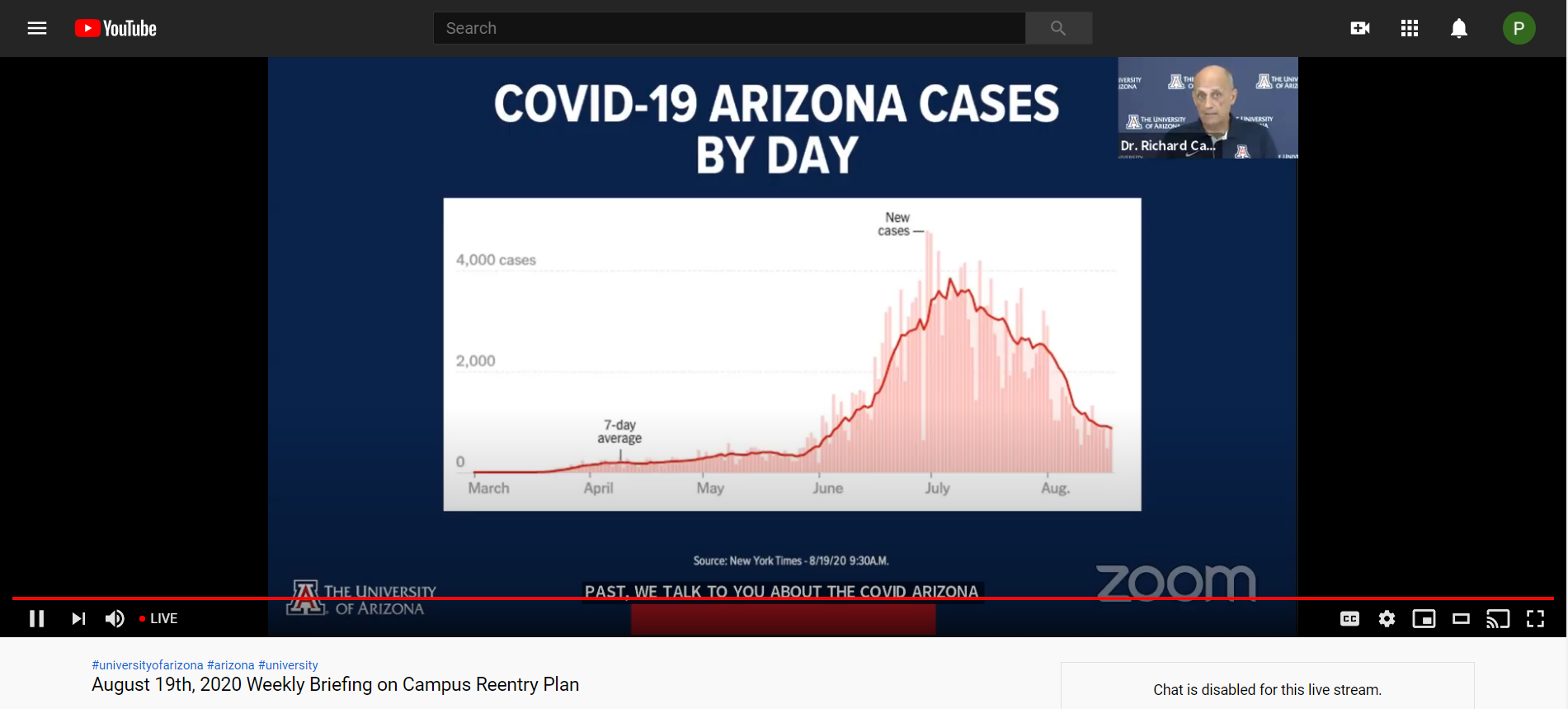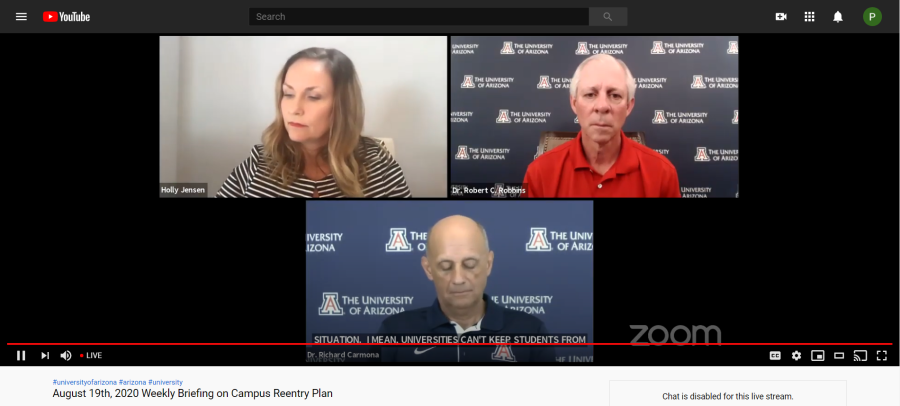The Aug. 19 campus reentry task force press conference focused on current COVID-19 testing rates on campus and specific details regarding the start of the semester Monday.
Antigen tests, located at McKale Center, were required for all students prior to moving into the dorms on campus. UA President Dr. Robert C. Robbins said data up to Aug. 18 shows that over 4,000 individuals have received antigen testing with nine total positive results. As of Aug. 19, over 300 antigen tests were administered with three positive tests.
The university also has optional antigen testing for faculty, staff and students living off-campus at the NorthREC.
“I strongly encourage everyone who is going to be coming back to the campus to go by and take advantage of this test,” Robbins said.
While the testing portion of the UA’s Test, Trace, Treat plan is well underway with antigen, PCR and antibody testing available through Campus Health, Aug. 19 also marks the debut of the app COVIDWatch, which would enable the university to trace COVID-19 cases on campus automatically.
“We need participants for [COVIDWatch] to be effective as I said earlier,” Robbins said.
The app functions through Bluetooth, anonymously logging whether one has been in close contact with a cell phone whose owner has tested positive for COVID-19, as input by a health professional.
Robbins also discussed the start of fall semester Monday, in light of the University of North Carolina rolling back their reopening plan just one week after returning to campus.
“I think it’s really important as we see — our colleagues that we have worked very closely with in North Carolina and across the country — see the disappointment that they had within a week of having to shut down,” Robbins said.
Robbins acknowledged that while faculty, staff and students have been on campus over summer without an outbreak, there is still a risk of the university having to shut down after opening for the fall.
“I know [UNC] didn’t test like we’re testing for the students on campus, but I don’t think that was it,” Robbins said. “I think it was mainly the off-campus activity, the large gatherings that are outside … it’s the activity that goes on outside of campus and then bringing infections back to campus. That, ultimately, if we have major outbreaks, that’s what’ll get us.”
Robbins said the team will continue to monitor campus closely to determine whether people will be allowed on campus as previously planned; any changes will be communicated via the weekly press conferences and written communication.
“We’ll watch the data every day, we’ll have a meeting with our experts to review this matrix of metrics on Monday afternoon, and if we see any kind of outbreak before then, then we’ll reconsider even starting with these essential classes in-person,” Robbins said.
Head of Facilities Management Chris Kopach was also present at the briefing, speaking on some of the COVID-19 health precautions and preparations his team has implemented on campus, including intensive building cleanup, signage reminding those on campus of Centers for Disease Control and Prevention guidelines, new touch-free systems, better ventilation, hand sanitizing stations and installation of over 1,000 sneeze guards.
Kopach also said Facilities Management has divided the main campus into 10 zones, each with a head from the team to oversee each’s protective measures.
Another health measure Facilities Management is implementing is tents set up across campus, where students can perform various activities outdoors, such as working out near the Student Recreation Center, eating lunch near the Student Union Memorial Center or just doing their online classes.
“Nowhere in my time has custodial been as important as it is now,” Kopach said.
Kopach said his team is well-trained and prepared to clean the areas potentially contaminated by the COVID-19 virus.
“When we get a call, 24/7, … we have a contact-tracing group that’s working together with our risk management, our public health folks, Campus Health, to make sure we’re keeping everything safe,” Kopach said. “And then our Facilities Management custodial team will respond and clean everything up within one hour.”
Reentry Task Force Director Dr. Richard Carmona also reviewed COVID-19 data from the state and Pima county once again, which continued to trend downward this week.

“We are cautiously encouraged that the movement of the data that we look at is moving in the right direction … No one metric is all we need, but all these metrics together give us a picture of how we should move forward and how we do it most safely,” Carmona said.
To watch the full reentry briefing, visit the UA’s YouTube channel.
Follow Sam Burdette and Priya Jandu on Twitter









